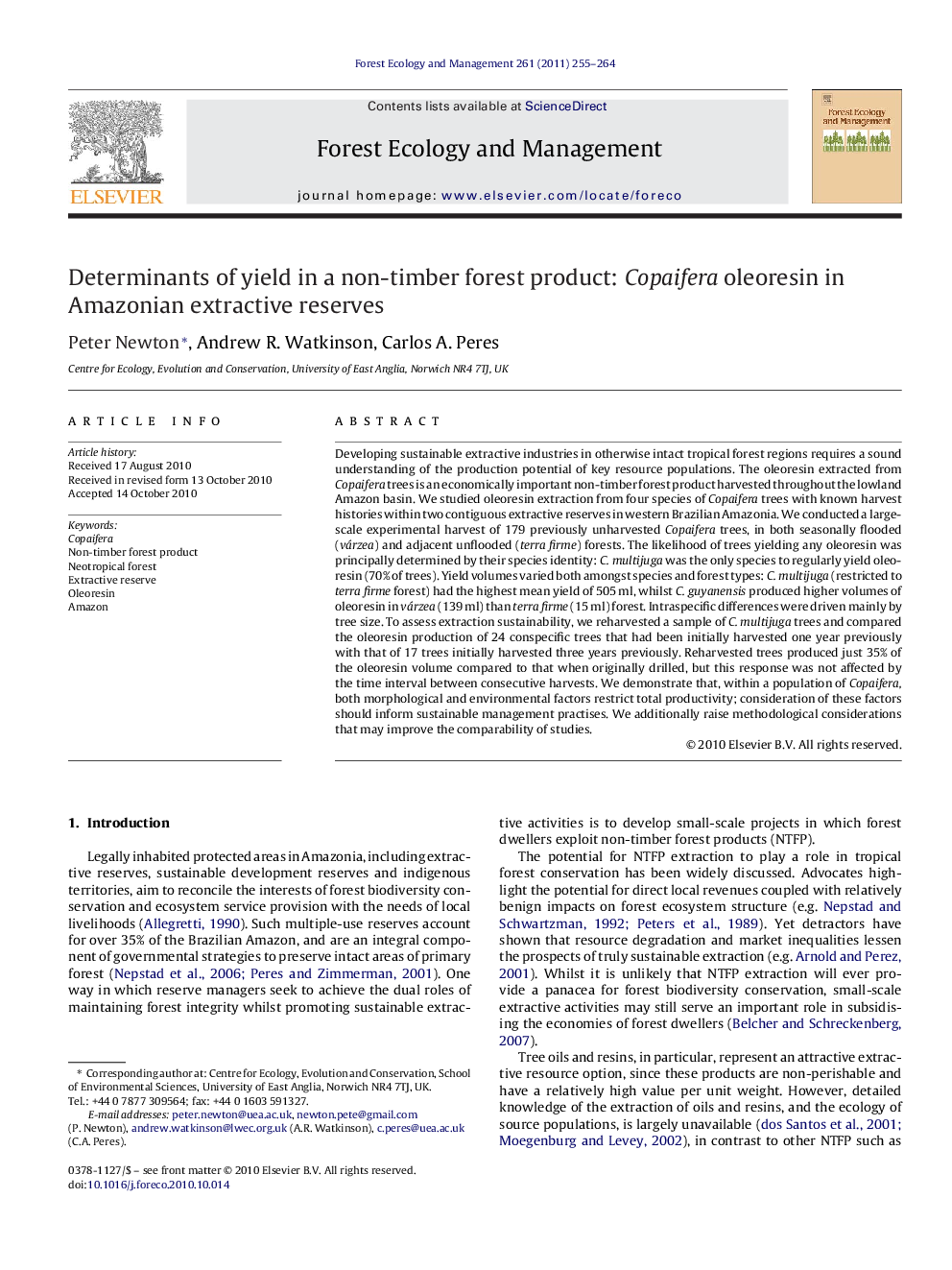| کد مقاله | کد نشریه | سال انتشار | مقاله انگلیسی | نسخه تمام متن |
|---|---|---|---|---|
| 88171 | 159287 | 2011 | 10 صفحه PDF | دانلود رایگان |

Developing sustainable extractive industries in otherwise intact tropical forest regions requires a sound understanding of the production potential of key resource populations. The oleoresin extracted from Copaifera trees is an economically important non-timber forest product harvested throughout the lowland Amazon basin. We studied oleoresin extraction from four species of Copaifera trees with known harvest histories within two contiguous extractive reserves in western Brazilian Amazonia. We conducted a large-scale experimental harvest of 179 previously unharvested Copaifera trees, in both seasonally flooded (várzea) and adjacent unflooded (terra firme) forests. The likelihood of trees yielding any oleoresin was principally determined by their species identity: C. multijuga was the only species to regularly yield oleoresin (70% of trees). Yield volumes varied both amongst species and forest types: C. multijuga (restricted to terra firme forest) had the highest mean yield of 505 ml, whilst C. guyanensis produced higher volumes of oleoresin in várzea (139 ml) than terra firme (15 ml) forest. Intraspecific differences were driven mainly by tree size. To assess extraction sustainability, we reharvested a sample of C. multijuga trees and compared the oleoresin production of 24 conspecific trees that had been initially harvested one year previously with that of 17 trees initially harvested three years previously. Reharvested trees produced just 35% of the oleoresin volume compared to that when originally drilled, but this response was not affected by the time interval between consecutive harvests. We demonstrate that, within a population of Copaifera, both morphological and environmental factors restrict total productivity; consideration of these factors should inform sustainable management practises. We additionally raise methodological considerations that may improve the comparability of studies.
Research highlights▶ Species identity is the primary determinant of Copaifera yield likelihood. ▶ Copaifera oleoresin yield volumes vary both amongst species and forest types. ▶ Tree size drives intraspecific differences in Copaifera oleoresin yield volume. ▶ Oleoresin production is not affected by the time interval between harvests. ▶ Morphological and environmental factors restrict Copaifera population productivity.
Journal: Forest Ecology and Management - Volume 261, Issue 2, 15 January 2011, Pages 255–264